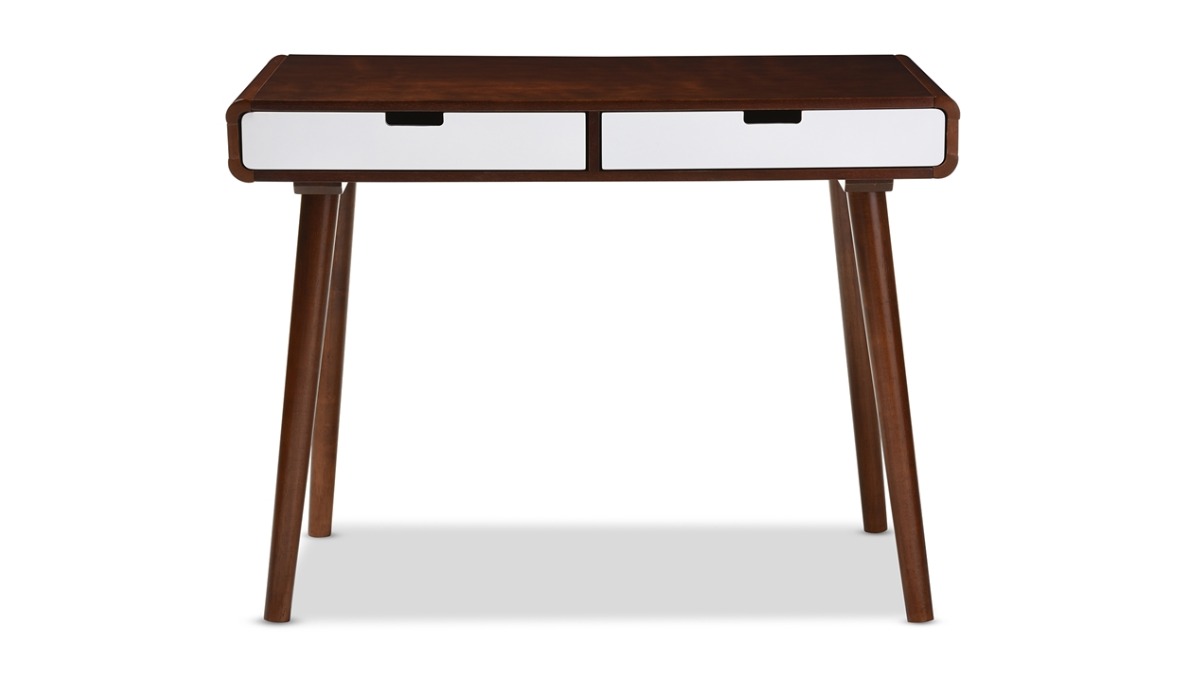
Transform Your Space with Organic Interior Design
Table of Contents
The organic interior design aesthetic, which draws inspiration from nature, stresses simplicity and coexistence of artificial and natural components. Organic modern interior design trends in home décor favor organic shapes and simple elements like glass or wood. It has simple shapes, a muted color scheme, and typically plain surfaces without flourishes or ornamentation.
The furnishings and design components in organically styled interiors adhere to the design tenet that shape follows function, which states that objects and features ought to be both useful and aesthetically beautiful, with one part constantly influencing another and vice versa. We will share a few key elements of organic minimalist interior design in an office.
Understanding Organic Interior Design
Organic interior design emphasizes natural elements, sustainability, and harmony with the environment. It involves using materials, colors, and textures inspired by nature to create a serene and balanced space. This design approach promotes wellness and connects occupants to the natural world, fostering a sense of tranquility and well-being.
Key Elements of Organic Interior Design
1. Natural Materials
Natural materials are the cornerstone of organic interior design. These include wood, stone, bamboo, rattan, and other eco-friendly materials that bring a touch of nature indoors. Using materials in their raw or minimally processed state adds authenticity and warmth to the space.
- Wood: Whether it's flooring, furniture, or accent pieces, wood adds warmth and texture.
- Stone: Stone countertops, walls, and tiles offer durability and an earthy feel.
- Bamboo: Sustainable and versatile, bamboo can be used for flooring, furniture, and decorative elements.
- Rattan and Wicker: Perfect for furniture and accessories, these materials add a natural, handcrafted touch.
2. Sustainable Practices
Sustainability is a key principle in organic interior design. This involves selecting materials and practices that minimize environmental impact. It includes the use of recycled materials, energy-efficient lighting, and eco-friendly products.
- Eco-Friendly Materials: Choose products that are sustainably sourced, recycled, or upcycled.
- Energy Efficiency: Use LED lighting, energy-efficient appliances, and smart home systems to reduce energy consumption.
- Water Conservation: Install water-saving fixtures and use drought-resistant plants.
3. Earthy Colors
An earthy color palette is essential in organic interior design. These colors are inspired by nature and include shades of green, brown, beige, and other neutral tones. They create a calm and soothing environment, fostering a sense of relaxation and harmony.
- Green: Represents nature and tranquility, ideal for walls or accents.
- Brown: Adds warmth and stability, perfect for furniture and floors.
- Beige and Neutral Tones: Provide a versatile backdrop that complements other colors and materials.
4. Textures
Incorporating natural textures adds depth and interest to a space. Textures like rough wood, smooth stones, woven fibers, and natural fabrics enhance the sensory experience and make the space feel more inviting.
- Rough Wood: Adds rustic charm and warmth.
- Smooth Stones: Provide a sleek, modern look.
- Woven Fibers: Offer a tactile element through rugs, baskets, and textiles.
- Natural Fabrics: Linen, cotton, and wool add comfort and organic appeal.
5. Indoor Plants
Plants are a vital component of organic interior design. They improve air quality, add color and life, and connect the indoor space with nature. Choosing a variety of plants, from large statement pieces to small potted succulents, can transform a space.
- Air-Purifying Plants: Such as spider plants, snake plants, and peace lilies, improve indoor air quality.
- Succulents and Cacti: Require low maintenance and add visual interest.
- Large Foliage Plants: Like fiddle leaf figs and monstera, create bold statements.
6. Natural Light
Maximizing natural light is crucial in organic interior design. It makes the space feel more open and bright, enhancing the connection with the outdoors. Use large windows, skylights, and light, sheer curtains to allow sunlight to flood the space.
- Large Windows and Skylights: Increase the amount of natural light.
- Light, Sheer Curtains: Allow light to pass through while providing privacy.
- Reflective Surfaces: Mirrors and glass can help distribute light throughout the room.
Styles of Organic Interior Design
1. Organic Industrial Interior Design
Organic industrial interior design blends the raw, unfinished look of industrial style with natural elements. Think exposed brick walls and steel beams softened by wooden furniture and lush greenery. This style creates a unique, balanced environment that feels both rugged and warm.
2. Organic Minimalist Interior Design
Organic minimalist interior design focuses on simplicity and functionality, using natural materials and a neutral color palette. This style strips away excess, creating a clean, clutter-free space that highlights the beauty of nature. Furniture and décor are carefully chosen to ensure they are both functional and aesthetically pleasing.
3. Organic Modern Office
The organic modern office style combines sleek modern design with organic elements to create a stylish and comfortable workspace. Features clean lines, natural materials, and plenty of plants to create a refreshing and productive environment. The organic modern interior style seamlessly blends the clean lines and minimalism of modern design with the warmth and natural elements of organic materials. This aesthetic focuses on creating a harmonious and serene living space by incorporating elements such as natural wood, stone, and neutral color palettes.
4. Rustic Organic
Rustic organic design emphasizes rugged natural beauty with reclaimed wood, stone accents, and a cozy, inviting atmosphere. This style often features vintage furniture and earthy tones to create a warm and homely feel.
5. Scandinavian Organic
Scandinavian organic design merges the minimalism of Scandinavian style with natural elements. It features light wood tones, clean lines, and a neutral color palette, complemented by plenty of natural light and indoor plants.
6. Bohemian Organic
Bohemian organic design is eclectic and relaxed, incorporating natural materials with a mix of vibrant colors and patterns. The bohemian home office style emphasizes comfort and personal expression, often featuring handcrafted items and lush greenery.
Embracing Organic Interior Design in Your Office Setup
Organic interior design style, as well as office space, go seamlessly together. Creativity, cooperation, and efficiency flourish when workers feel at home in their workspace. The conventional cubicle labyrinth design is disappearing as more businesses move toward mobile and mixed employment, making room for multifunctional communal areas with modern office chairs and furnishings, an emphasis on integrating natural materials, using wall space, and much more.
The most effective office layout is the one that works best for your business. Finding ideas that balance trends that come and go and timeless style may be difficult. With our office furniture design manual, we're here to assist. After defining organic contemporary interior design, let's move on to the design guidelines that will make it easier for you to use this aesthetic in your own house.
Select a Dominant Style to Accentuate Your Workspace's Overall Shape
From our professional office décor ideas, contemporary organic styles typically tilt more on one side. It is advisable to select a dominant style that will serve as the foundation of your office's overall design. The majority of designers tend to lean more significantly toward contemporary fashion. After that, they add organic components using smaller bits.
Remain More Balanced and Calm with Your Color Pallet
It is no surprise that neutral is not the same as white. Other neutral colors include taupe, emerald, as well as blue. Considering office wall décor, it's believed that modern organic style prospers when the wall color scheme leaves room for other aspects to stand out. You will overshadow some other design components in the office if the walls are painted in a way that is too dramatic.
Base Workspaces with Much More Contemporary Furnishings
The dominant style of a space is typically determined by the large-scale furniture in that space. We prefer to suggest modern couches, tables, and armchairs for workplaces with a modern organic aesthetic. Using large-scale items with sleeker surfaces and clean lines helps the space appear modern and new.
Meeting Rooms in an Industrial Design
Any business office interior would look great with the no-nonsense, no-frills interior contemporary design. The storehouse, industrialized, and manufacturing elements are the inspiration for industrial-styled rooms, one of today's most popular modernistic trends. Durable materials are typically used in furniture decorating, like the black steel frame in the conference room's interior.
Foliage Can Help You Create A Nice Workplace
A modern workplace with indoor plants contributes to the interior's visual appeal and fosters a comfortable environment for employees. You can reduce your anxiety levels, and your efficiency may even increase in your working space if you have indoor plants. An eye-clearing vision of lush greenery might ease the strain that long computer sessions have placed on your vision.
Combination of Wood with Metal for an Organic Appearance
Use a wooden and metal mix to give your workplace the cosines of a cozy organic modern home office. The earthy components of wood and metal complement any interior decorating style, and their lovely symbiosis is still popular even for contemporary workplace layouts. The organic appearance makes an area feel cozier by conjuring up images of the softness and depth of finely constructed furniture.
Landscape Decorations for Your Workplace
Adding a few landscape accents to your work area may bring the advantages of garden settings inside. Making a few zen-inspired nooks in your workplace may boost morale among staff members and make a good first impression on guests. A length of riverside pebbles with potted plants in your work area may offer an eye-catching visual treat. You can request small ponds or waterfall backgrounds for a bigger interior design.
Open Office Layouts That Take Ergonomics Into Account
Modern workplaces' open space design concept primarily attempts to promote employee cooperation. Open offices often consist of modular furniture lines arranged over an open floor with uninterrupted desks. Although the goal of this office arrangement was to encourage staff cooperation, its drawbacks have also been identified. The primary issues of open workplace layouts include impaired attention, a diminished sense of privacy, and a loud atmosphere.
Interesting Geometric Designs
Contemporary design's current geometric configurations inspire a wide range of artistic works. The ability to generate such fascinating forms gives design options for the modern corporate environment, from furniture to building structures. Why not cover barren walls with aesthetically appealing abstract art rather than the traditional image gallery? You may use the original background in any office space, including the lobby, lounge, and conference halls.
Technologically Advanced Office Environments
Modern workplace architecture should be easily adaptable to include this new technology because newer and more sophisticated systems are always being launched. Even in seminar or meeting rooms, equipment must be broad enough to accommodate computers and tablets. These gadgets require considerable electricity, which electrical devices and utility outlets must accommodate. Huge businesses today frequently include other robots like movement light sensors and security gates.
Conclusion
Contemporary offices are moving beyond simply being a location to conduct business and are increasingly becoming a statement of a firm's identity and values. A variety of designs and unique elements are included in a organic interior design, which conveys a great deal about the business and makes it a fun place to work every day.
Suppose you are looking for some office accessories for your organic modern interior designed workplace.
Spread the word
.svg)









